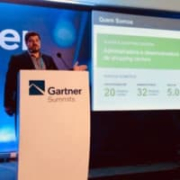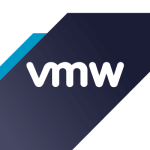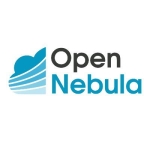
Nutanix Cloud Manager (NCM) Primary Use Case
The use cases are related to infrastructure migration from VMware to Nutanix. I have exposure to the Dell XC series, which has a Nutanix hypervisor installed. It consists of containers along with the Nutanix infrastructure using Dell hardware.
View full review »I use Nutanix Cloud Manager (NCM) to create virtual machines, connect them for storage. I use it for many other tasks, but mainly for servers or virtual machines, where I build different virtual machines, such as Windows and Linux, of all kinds.
View full review »DP
Drew Plaster
Sr. Network Systems Administrator at Moda Health
Our primary use cases for Nutanix Cloud Manager (NCM) include working with databases, batch processes, UCS, and a lot of in-house homegrown applications. Before selecting Nutanix Cloud Manager (NCM), we were users of a different product and ran both products side by side for a while.
Almost three years ago, we decided to transition all of our database usage, applications, batch processes, and UCS over to Nutanix.
View full review »Buyer's Guide
Nutanix Cloud Manager (NCM)
August 2025
Learn what your peers think about Nutanix Cloud Manager (NCM). Get advice and tips from experienced pros sharing their opinions. Updated: August 2025.
867,370 professionals have used our research since 2012.
My main use cases for Nutanix Cloud Manager (NCM) are for managing resources in the cloud.
I'm currently using Nutanix Cloud Manager (NCM) to manage my infrastructure. I'm using the self-service functionality from Nutanix Cloud Manager (NCM).
View full review »We actually use Nutanix Cloud Manager (NCM) for reporting and analysis on VM performance, particularly what is over-provisioned.
I am currently using Nutanix Cloud Manager (NCM) to manage our infrastructure. The specific functionalities we are utilizing in Nutanix Cloud Manager (NCM) include the automation piece. We do the monitoring analysis, and we are using some of the automation and playbooks to categorize our VMs as they're being created so they can go into the right security zones.
View full review »JB
Jennifer B.
Vice President at a tech vendor with 10,001+ employees
We are currently using Nutanix Cloud Manager (NCM) for our on-prem infrastructure.
Our main use cases for Nutanix Cloud Manager (NCM) come from being a company that is split half and half between federal and commercial work. We needed something that could be highly compliant while also giving us flexibility across the different clouds that we provide. The primary use case is the compliance piece, making sure that we're managing, securing, and locking down the system the way that we need to keep our customers happy.
View full review »Our main use case for Nutanix Cloud Manager (NCM) was initially to run away from the high cost of VMware, and after that, we realized that if we compare apples and apples, there is a technical advantage in Nutanix. The technology is newer regarding storage management, and we appreciate the path that Nutanix was taking with NKE. Now with Nutanix, we know the path we are taking for NKP, whereas VMware's Tanzu was proprietary, requiring us to fully commit to VMware or nothing.
View full review »We use the Nutanix Cloud Manager (NCM) tool to do the data analysis of all of the VMs that we have provisioned, and just report and support our decisions.
We primarily use it to measure the efficiency of our organization. We have a large application, so we have to keep an eye on that. We closely monitor storage, memory, CPU, and all these different resources and their operating efficiencies.
We haven't used the cost governance feature yet, and it's something we're looking to implement in the future, but it's not a use case for us right now.
View full review »SB
Steve Bennett
Director, Information Technology at a government with 201-500 employees
My main use cases for Nutanix Cloud Manager (NCM) involve managing infrastructure and looking at dashboarding performances.
I am currently using Nutanix Cloud Manager (NCM) to manage my infrastructure.
The specific functionalities I am utilizing with Nutanix Cloud Manager (NCM) include offsite replications, between site replication, load balancing, and regular management creations.
We haven't started with self-service, Intelligent Operations, or cost governance yet; we haven't looked at that too much.
View full review »PS
Pedro Suero
IT INFRASTRUCTURE MANAGER
My main use cases right now involve migrating two of the most critical server VM servers that we have; one is our secure server, which has a lot of data in it, and the other one is an application server that hosts the critical application for my business.
I am currently using Nutanix Cloud Manager (NCM) to manage our infrastructure.
I'm using the local storage in Nutanix, and I'm using the move and the prism sensor to administer the closet.
Regarding specific functionalities, we already have micro-segmentation in Security Central to analyze the traffic that's crossing between those servers to be able to firewall application policy between those applications that are working on those servers.
View full review »AJ
Adrian Junger
Team Lead, IT Infrastructure at a insurance company with 501-1,000 employees
We use it primarily for general workload for the virtual machines, reporting, and getting the capacity reports.
View full review »SM
ShekharMishra
Infra Tech Support Associate Manager at Accenture
My use case is for legacy cluster migration. We have removed the legacy cluster. We are using a Nutanix cluster to increase availability because it is a very good product with everything in one box: storage, network, and compute. We migrated from physical hardware, which was out of warranty and expired, and migrated the application to the Nutanix cluster.
View full review »MN
Mohd Noshad
Technical Lead at Tata Consultancy Services Limited (TCS)
I am working in the lifecycle manager in the Cloud, which includes Nutanix Cloud Manager (NCM), and I'm working with the PCS at Tata Consultancy Services on project works, such as NCC upgrade, Foundation AOS number upgrade, and Nutanix Cloud Manager (NCM) upgrade activities.
View full review »Our use cases for the Nutanix Cloud Manager (NCM) include managing multiple sites and multiple customers under this site, as I delivered to multiple customers in Canada.
The type of customers I see with Nutanix Cloud Manager (NCM) are primarily middle industries for technologies or manufacturers, as it is currently not for government customers.
View full review »Nutanix Cloud Manager (NCM) is a unified cloud management platform that provides automation, cost optimization, self-service provisioning, and security across hybrid and multi-cloud environments. Prism Center manages Nutanix infrastructure, monitoring, alerts, and lifecycle, while Nutanix Cloud Manager (NCM) adds advanced capabilities such as cost governance, automation, self-service, and security, as it is built on top of the Prism Center. It simplifies multi-cloud management and reduces cloud costs with optimization tools while enabling self-service and faster provisioning, improving security and compliance, and automating manual IT operations.
Regarding speed, Nutanix Cloud Manager (NCM) automates deployment and includes logging task execution, such as blueprint deployment steps and runbook, which is helpful for debugging performance analysis for application performance and logging during automation. Because we have multiple nodes, we can use automations within two to three minutes. When running the automation script, we can deploy and collect the logs within two to three minutes. Without using automation scripts, it would take more time and effort for collecting requirement data and requirement deployments. Manual management is very difficult, so we develop scripting automation for deployment, collecting logs, and health checks, making it very speedy at two to three minutes.
View full review »My use case with Nutanix Cloud Manager (NCM) includes cluster management, cluster initiation, VM management, VM capacity, VM deployment, and day-to-day operations, as well as patch lifecycle management of clusters and the AHV.
View full review »We used Nutanix Cloud Manager (NCM) with our dying legacy infrastructure that was sluggish and no longer compliant. We had a higher demand as our business operation became more fast-paced, so we needed a solution like Nutanix Cloud Manager (NCM) that could address all that, which was reliable with no downtime for upgrades and a single pane of glass for management.
View full review »MD
Michael De Araujo
Dev-ops Engineer at Inetum
My client is a French company for train travel. They had several servers. They had about 10,000 servers on the VMware infrastructure. The target of the company was to migrate to the new architecture, Nutanix Hyperconverged, because of the costs of VMware. My principal work was to automate the migration from VMware to Nutanix.
We have a private cloud with Azure and AWS. We will also have GCP over time.
View full review »JC
Joao Chaveiro
Cloud and Infrastructure Manager at Yageo Co., Ltd
We mainly use it for infrastructure as a service. We use it for managing the clusters and hardware and running the VLCM updates. We do not use it to manage files and all the embedded because we have other solutions corporate-wide for it. It is pretty much being used to manage the infrastructure of the clusters and make sure that we have all the licenses applied to all the different clusters around the world.
We are multinational. I have clusters right now but not on all 53 plants. We have some Acronis data centers. They are called Co Lo data centers. We have a couple of those data centers with Nutanix in them. We have one in Tokyo, one in Ashburn, and then we have a couple of data centers in Mexico with Nutanix. We also have some in the US, some in Portugal where I am from, Italy, Germany, Asia, China, and Japan. We are around the world, and we use Prism to manage all those data centers.
View full review »Nutanix Cloud Manager offers the flexibility of the cloud, allowing us to easily create and destroy environments for proof-of-concept purposes without impacting any patched applications. This flexibility lets us clone existing Veeam instances for various sectors. After reading and patching the clone, we can either delete it or replace the original instance with the patched and updated clone, effectively running it from the Cloud.
View full review »RC
Roger Costa
Solution Architect at Layer
We use Nutanix Cloud Manager (NCM) for big enterprises in Brazil, including Sebrae, the Minister of Brazil, and three local agencies in Brasília; we have 10 or 11 customers installed.
View full review »SP
Santosh Palaskar
Server Administrator at a agriculture with 501-1,000 employees
The use case for Nutanix Cloud Manager (NCM) is that we can share data to the cloud and there is no need to sync manually. It automatically runs the job for the data sync from the on-premises to the cloud. Some users have data on their systems or servers, so there is no need to keep local data. It will go automatically over the cloud and we can easily access it without any issues. For applications, we can run them without any issues. If I compare with other virtualization such as VXI, there are some issues. However, when comparing with Nutanix Cloud Manager (NCM), it performs better. There is no need to update any software manually as it will update automatically, eliminating the need for downtime.
View full review »MR
Maximilian Rosenthal
Senior IT Expert at a computer software company with 1,001-5,000 employees
I use the solution in my company to manage around 27 clusters. It is all a single pane of glass to manage them and monitor them in a way that is not really associated with cross availability but more in the area of whether there are any impacts, alerts, or any such related stuff.
JP
Jose Parra1
Technological manager at I-Med
We have a platform of about 300 virtual machines, and most of the technology was very old, pre-existing legacy technology. We needed a world-class hyperconverged solution that would provide us with the ease of migrating these virtual machines and allow us to have a hybrid platform in the long term. We wanted some of the things in the private cloud and other things in AWS, which is the public cloud that we have.
KM
Kim Mount
Technical Director at Cutter Project Limited
We use Nutanix Cloud Manager for monitoring. It gives us visibility into our customers' workloads. It's easy to workload right on Nutanix, but you must be able to monitor how well it's running and the migrations occurring inside.
Most of our customers have on-prem environments with NCI & MCM, so they can have a Nutanix cloud cluster inside one of the big hyperscalers. With NC2, you can use your existing Nutanix licensing or procure a cluster in the hyperscaler that looks and smells like what you've got on-prem. You have the CapEx model, where customers get their budget at the start of the year and buy what they need, and the OpEx model, where they pay monthly. This caters to both customers.
Most of our cloud-based customers use Azure because they are Office 365 customers, and Azure is the path of least resistance. However, we do have GCP and AWS customers. In the case of AWS, it's more about the available tooling.
View full review »We use NCM in a training environment.
The solution was picked as part of the hyper-converged platform using Cisco hardware and Nutanix hypervisor software.
View full review »FE
Federman Estrada
Commercial manager at E-minkatech S.A.
We work in the public sector, which includes local governments, fire departments, and transportation. The most interesting use case is that we have set up a private cloud with two sites where they are replicated, and from the same console, we have synchronous replication using 1M Ethernet. The RPO is zero.
LA
Leonardo Azevedo
Technology director at xpi
We started migrating from VMware to Nutanix four years ago, and we're seeing much better performance.
View full review »LP
Laurent Peters
IT Manager at Editus Luxembourg S.A.
We completely migrated all of our data centers from VMware to Nutanix. We were running a hyper-converged infrastructure based on HPE systems. We chose the full Nutanix stack because of the level of performance and the availability. There was the robustness of the systems, and it also looked simpler to manage than VMware.
View full review »I use Nutanix Cloud Manager (NCM) for sales and enterprise needs. I implement NCM for clients, and I use it for university education. Nutanix Cloud Manager (NCM) helps with the automation of the clusters and provides a unification platform, with the principal automatic communication in redirect.
NCM helps with automation for the preparation of new VMs for other teams. This is important for me because I don't need to spend more time stopping my other operations to create new VMs. Using NCM's built-in playbooks has helped free up time for my IT team to focus on other projects, saving approximately 20% of time.
View full review »The primary use case for Nutanix Cloud Manager is to distribute the workload for the infrastructure. It is used for virtualization and integrates with the front end to provide cloud features as a private cloud to the development and operations team, leading to less management overhead for the administrator team.
View full review »TH
TomHamilton
Senior IT Engineer at Estes Express Lines
We use the solution mostly for management. We also use it for disaster recovery on Nutanix clusters to keep a small group of servers running. We wanted one area so we didn't have to manage everything separately.
View full review »We use Nutanix Cloud Manager for the daily administration of our Nutanix cluster. NCM provides one spot to go to for everything Nutanix related. It gives us a window into the overall health of our platform, allowing us to see everything at a glance. NCM tells us about the number of VMs running and all the other critical metrics you would want to see, such as host and virtual machine performance. It can provide a single-pane-of-glass view into multiple clusters, but we're only managing one.
View full review »SB
Sebastian Belgacem
Consultant technique senior at Agora Calycé
I am an MSP currently, but ten years ago, I was a customer of the solution. What I love about Nutanix is its one-click upgrade. I know that with the tool, all of our company's infrastructure will have a standard upgrade through the switch. With Nutanix, I have to click and go for the launch option.
In my company, people in the operations team gain benefits associated with time and productivity. With the tool, our company can give time to customers so that we can answer or respond to their problems, not just technical problems.
Nutanix Cloud Manager (NCM) is an invisible tool for managing an infrastructure, just like any tool we use to manage any environment. It has been helpful in the long run, considering that I always get to direct my company to help other organizations and stay customer-friendly.
We use Nutanix Cloud Manager to consolidate and manage our Azure and AWS platforms, as well as our VMware server virtualization process.
View full review »We have Cloud Manager deployed across multiple departments, and each has an individual cluster. NCM manages all of those clusters from a single bandwidth source. About 60 people at our company use the solution.
View full review »We're using Nutanix Beam and Flow. They are the cloud cost governance and cloud security governance products, but they may have different names now.
We're a large university. We have hundreds of cloud accounts in all three of the vendors: Microsoft, AWS, and Google. This product allows us to look at all of them with one dashboard and do a lot of pricing and cost work across them with one dashboard for the finance side. For the flow side also, it has a lot of good tools for AWS and GCP but not as many for Azure. As a big university, we use it to protect ourselves and keep ourselves safe while we're using the cloud.
We also have this other thing called cloudbank.org. So, we have two different licenses with Nutanix. One for CloudBank, and one for the University of California, San Diego. The CloudBank one is all about researchers from all over the country. We have about 115 different researchers there doing all kinds of things.
View full review »We use Nutanix Cloud Manager (NCM) for the hyperconverged platform and to be able to centralize all our workload in a resilient platform.
View full review »TV
Tiago Vidal
Datacenter Infrastructure Manager at a financial services firm with 201-500 employees
I use the company solution to manage all Nutanix clusters. We have three clusters, including one for VDI, one for the production server, and another for disaster recovery. The tool helps us manage everything in one view.
We wanted to optimize our process. We were going into a cloud architecture, so we wanted to see how we could leverage the existing Nutanix framework instead of manually managing the servers.
We currently have a physical VM set up. We had slowly wanted to migrate to the cloud. Since we are already using Nutanix, my senior architect gave me some access to play around with the solution and explore how we can deploy code as a platform as a service instead of writing our own scratch code. If we want to use it as an independent platform in the future, and as a core developer, I wanted to write code to make sure it is interoperable in any of the cloud services we might use.
Prism Pro is the heart of our organization. If Prism Pro dies, then our system dies.
We are in the gaming industry with approximately 85 servers. This solution increased our productivity and reduced our time performing server checks.
We also use Prism Central for our monitoring on the administrative side.
View full review »JD
reviewer294535
Consultant Infrastructure at a tech services company with 11-50 employees
We use the solution between different customers. Each has their own use case.
View full review »OD
Oussama Deraoui
System Administrator at Agence Pour Le Developpement Agricole
I use the solution in my company for all of the created VMs. We have all of our systems in Nutanix. My company migrated from Veeam to VMware and then to Nutanix. In my company, we have Nutanix for all of our servers.
My company chose the tool since it is a very simple and good product. When I checked the comparison between VMware and Nutanix, I found the latter to be better, especially since it is very easy to monitor.
RP
Robert Pohjanen
It architect at LKAB
It is a part of our automation tool.
View full review »PS
Pete Sinesio
Technical Solutions Architect at a tech vendor with 10,001+ employees
I work at a distributor. We use it for partner-facing demos, and it has been really great. My mission is to help partners see the light with Nutanix, and that's where I use Nutanix Cloud Manager the most.
View full review »Our first use case is for ransomware. We have two more use cases that we identified. The second one is going to be for DR, and the third one is going to be for capacity.
Currently, we do ransomware on-prem. We use a shared cluster in our disaster recovery site. With Nutanix Cloud Manager, we hope to use the NC2 clusters in Azure and move all the ransomware activities from on-prem to the cloud.
View full review »We have a group of sister companies with different types of applications, from web-based to server-installed.
We segment our clusters into different areas for each company to use, from development to staging to production.
Currently, we mainly use the production area, and our staging is off. With the new NCM, we may use a different hardware or environment.
Since moving to Nutanix, the development and support teams prefer it more.Due to differences in hardware and workload deployments.
View full review »I have about 85 virtual machines that rotate between cloud and on-premises. I use the tool for databases, applications, and service communications. I use the solution for my complete infrastructure. Since I work in a Casino, we have a lot of work on the databases with respect to our gaming applications and their servers. Our applications also run on workstations. Therefore, I use the Nutanix platform to store all our applications. I use it for file servers, email servers, DHCP, DNS servers, and domain controllers.
View full review »We use the solution to automate the business processes for our customers.
View full review »We use Nutanix Cloud Manager to manage all of our Nutanix infrastructure. We have six data centers throughout the world, and we use it to manage all that infrastructure for VMware. We're currently moving to AHV and are managing those as well.
View full review »I am not using the cloud manager myself. Instead, I am responsible for deploying and implementing it on behalf of my clients. My role solely involves deploying the manager.
From my company's perspective, our main use case for Nutanix revolves around Citrix. We use it for Citrix Cloud, Citrix on-premises, and sometimes for data center modernization. However, the main reason our customers continue to use Nutanix is its multi-cloud visibility and its ease of VM management.
One or two of our customers utilize the built-in playbooks depending on their level of maturity and available resources. The automation goals of these playbooks are important, but the extent to which they are adopted depends on the customer's IT team and their level of readiness.
We have just begun implementing this, so we don't have any feedback yet on how much time it will save on their projects using playbooks.
View full review »Nutanix Cloud Manager's biggest use case is compliance management, which includes configurations and drifts.
Cost estimation is another use case, but I don't know whether Prism moved that service because I've not used this product for cost estimation for the last eight to ten months. I've used other products for cloud health and other aspects.
We are still working on moving workloads from the old environment to Nutanix. We are planning to use Nutanix for our mid-tier. The mid-tier consists of noncore applications like medical services.
View full review »Using Nutanix, we have deployed our on-premise private cloud. We run user-based workloads, corporate application-based workloads, database workloads, and general-purpose workloads.
View full review »JV
José
Senior Systems Engineer at a retailer with 11-50 employees
We use Nutanix for management and capacity planning.
AG
AmitGumber
IT Operations at a engineering company with 5,001-10,000 employees
Whenever we face any challenges related to the movement of virtual machines from one cluster to another, we are using Prism Pro. It makes our life easy because with the help of the Prism Pro, we can manage the movement of virtual machines between clusters. We can validate and do complete health checks of physical hosts and logical hosts, as well as of the complete compute storage and other components. All those are converged and are a part of a single solution. With the help of Prism Pro, we are able to simplify our operations and administrative tasks.
It is deployed in an on-premises data center. Both data centers have a couple of pairs of clusters, and the clusters are interconnected, just like the data centers are connected. Both clusters are replicated between themselves to have their data synchronized and updated so that in the event of a failure in one of the data centers, the other data center can take over.
View full review »Initially, we deployed one cluster. Then, we deployed another two to three clusters. The main use case was to have a single console with all the alerts as well as viewing each cluster from a single pane of glass. That was one of the primary reasons for moving to this solution.
We are on the latest version because our company states that we need to upgrade every 30 days. Therefore, we are on a 30-day cycle, using the latest version of it. If Nutanix releases a new version, then in the next 30 days, we are on that version.
View full review »MJ
MohammedJaber
System Architect at Imam University
We use the solution for virtualization purposes.
View full review »I use Nutanix with Citrix. Sometimes, I need to expand the workload.
View full review »We use Nutanix Cloud Manager (NCM) mainly for the centralized management of multiple clusters. We're running two clusters under the solution right now, and we'll be expanding to three probably within the next couple of months.
View full review »We are an education institute, and we use Nutanix Cloud Manager to manage student applications, employee applications, and for other educational purposes.
View full review »We use it for capacity planning and we forecast with it. We use the workload reporting, which includes VM efficiencies, and we're able to provide reports that way on capacity, storage, and Runways.
View full review »DP
Drew Plaster
Sr. Network Systems Administrator at Moda Health
The company went with Nutanix and hyper-converged. Just the sheer number of disparate vendor products and hardware the company had to deal with was a lot. The solution was used for consolidating everything into a much more easily managed payment class. Prism brings it all under one umbrella.
View full review »We use it for our service, running everything through Nutanix.
I use the VM efficiency to figure out what services are over-provisioned. I've also been experimenting with the reports. In addition, I've been using it as a way of collecting all the data from all the different clusters into one portal.
View full review »Cost Governance is a SaaS solution that helps customers optimize public cloud services. Most customers don't have a clear idea about workload sizing. We measure the usage compared to what has been defined and recommend ways to optimize.
You can use Cost Governance to perform cost governance in multi-cloud environments. It supports the three big public cloud providers — Azure, AWS, and Google Cloud Platform — and private clouds for Nutanix environments.
View full review »We use Calm as an automation engine for deployment of the cluster software over our network. We are also using it to deploy standardized workloads on the Nutanix clusters.
We also use it to create a "self-service shop," where we can select to deploy standardized workloads and choose a certain profile for a particular server, and the Calm engine will integrate with other solutions like our IP database and CDB. Everything is fully automated.
In addition to standardized workloads, we also can say, "Give us a generic virtual machine."
We have multiple projects and multiple groups of developers that need an isolated space to deploy VMs and do testing against code, so we use the automated deployment of applications and VMs to spin up their unique environments.
Some people use a hybrid environment with a combination of on-premises and cloud resources, while others are moving towards a multi-cloud approach. The multi-cloud aspect of Nutanix Cloud Manager Intelligent Operations is becoming increasingly popular. That's also our primary use case.
View full review »PT
PavelTenitskiy
Engener unix team at Jet Infosystems Central Asia
We primarily use the solution for cloud management. We use it as a private cloud for internal client infrastructure.
View full review »We have some critical and not-so-critical applications. That's how we classify them broadly. The critical applications remain on-premise for us, while we're pushing the remaining ancillary applications to the cloud. That's how we use Nutanix Cloud Management.
We don't use it to manage cloud costs per se. We already have an enterprise agreement with Azure and AWS for cloud consumption. It's primarily to drive efficiency and migrate more applications to the cloud. Within the cloud division, we have around 52 engineers, and they all use it.
View full review »We use Prism Pro and Prism Central to centrally manage everything. It comes with a playbook and we use that to alter some procedures.
View full review »We consider it our "private cloud," and all of our workloads are deployed on it. Through our application, we offer secure cloud storage. Most of our customers are law firms or financial institutions and they really care about the security of their documents and they really care about document workflow. Because of that, we have to abide by government rules and regulations. For example, if you're a German law firm, you don't want to store your documents in Australia, you want to keep them in the European Union.
Our product is set up in multiple regions, so we've deployed the solution, on-premises, in each region. We have an instance in the U.S. to service U.S. customers. We have an instance in the United Kingdom to service customers there, and We have one in Germany to take care of the European Union. We also have one in Australia, where we take care of Australia and the Asia Pacific region. In each of those regions, we have data centers that we lease space from. In each region, it's a centralized solution. Our entire application that the end-user interfaces with runs on top of Nutanix.
View full review »We are currently using Calm to automate our infrastructure and platform provisioning, including going into infrastructure-as-code, standing up environments, and triggering deployment processes.
We aren't looking for it to automate application management to a single platform because we are spread across Azure Pipelines and Octopus Deploy and multiple methods of automating our application deployments. In the last year, we have standardized what we are doing with Calm in terms of infrastructure automation. We haven't stepped into application life cycle management with Calm. We are mostly focusing on leveraging Calm as our platform and infrastructure provisioning orchestrator.
It is based on-premises on our Nutanix cluster.
View full review »PS
Parham Shabaniani
Cloud Architect at a tech services company with 501-1,000 employees
We evaluated Calm primarily as an automation platform because that's what it is. I work for a service provider and we represent a lot of customers.
Our journey with Calm started because we wanted to decentralize our platform of services to customers, because agility is one of the biggest concerns. As a service provider, we have very rigid practices because we follow ITIL processes. If we're managing a customer's environment, we need to have controls. The unfortunate reality of controls is that they add rigidity, and that works in contrast to the agility of cloud where customers want to be able to adopt and migrate and move quickly, based on their businesses needs.
We're developing Calm in a way where we give customers choice and flexibility, so that we don't have to consume workloads for them. We give them Marketplace, and part of Marketplace is that we publish open source applications, as well as managed applications and unmanaged applications. These applications could be as simple as a stack of load balancers, middleware, and database. Or it could just be an operating system. It's really the customer's choice. We've given them a platform, similar to the way public cloud providers do, a marketplace where they can go consume, but in our marketplace, that consumption can be on their platform. We provide a shared platform like a public cloud, and the hyperscalers, so they can consume it in Amazon and Microsoft Azure as well.
Part of our journey with Calm was that we wanted to speed the process up, but at the same time, have a standard catalog in that process, and let that catalog evolve with our customer feedback.
In our organization, we are both a partner, a service provider, and reseller of Nutanix. We have a very strong relationship with them. We have adopted Nutanix as a standard for our service provider cloud, which is located in five data centers in the central United States. In these environments, we have deployed Nutanix for our own services and shared services, and we are also selling private cloud, based on the Nutanix platform, to our customers. With these deployments, we are standardizing on Calm as a centralized management marketplace. So it's doing a couple of things. It's letting customers consume against their own platform, and it's allowing customers the access to be able to consume hyperscale and/or our shared platform if they choose to do so.
Our journey, right now, is balancing between managing operating systems and our managed service practice for our customers. We're trying to automate that managed service practice with Calm and their blueprints and the openness of scripting that they support, so that we can automate adding an application, an operating system, from our catalog. It goes through an ITIL process of creating a customer asset in our service library. It grabs values of that asset—naming conventions, components of the infrastructure, et cetera—and puts them into the customer's asset library.
These are all bits of underlying automation that you normally wouldn't necessarily have to do, but as a managed product we do so on behalf of the customer for inventory purposes. And that's just one aspect, what a managed platform does. The other aspect is an unmanaged platform. A customer can say, "I want to do 10 things and I'm managing them myself, and I'm going to probably destroy them when I'm done." We wanted that ubiquitousness, so a customer can choose whether they want something managed by us or managed by them, but where we keep the experience for doing so the same. It's a standard journey instead of their having to open a ticket and request something and then wait for a period of time for it to be executed. We're trying to remove ourselves as friction.
Our use case for Calm has been wrapped around giving customers a marketplace to standardize their experience and to determine what the components of that standardization are, which includes workloads that we manage, workloads that the customer manages, and those two scenarios can be on their private cloud, our shared platform, or the hyperscalers.
IS
Ilan Stark
Project Manager at a healthcare company with 201-500 employees
One goal was to automate things. We had a lot of tools, but we needed a centralized tool. Calm helps us to centralize the deployments of our VMs.
We have a subsystem installed on Nutanix and we have blueprints for setting up this subsystem very easily. Also, for Kubernetes clusters, we use now CaaS from SUSE and we also create Kubernetes clusters with Calm. Our strategy is to make blueprints for all the virtual machines environments. It's an ongoing process.
MB
Maroane Boutayeb
SRE - Site Reliability Engineer - Infrastructure Engineer at Betclic Group
70 to 90 percent of the use that we have for the solution is to get virtual machines running. We are also starting to use different aspects of Prism. For example, we just started to deploy their file storage solution. We weren't able to so far (within the last year), because there hasn't been much time to deploy projects on new technologies.
TT
Tyler Twitchell
Senior Systems Engineer at a tech vendor with 201-500 employees
I'm one of the administrators in our data centers. My title is Site Reliability Engineer, so my use case is that of a user and getting it to administer machines and monitor application performance.
The purpose for Nutanix, in general, was to reduce our footprint within our data centers, to scale down to a single point for all of our compute and storage, which it does very well. We're using Prism Pro to access all of the different clusters; we're able to get to them through one interface.
View full review »We have installed a physical Nutanix box and we have created the server on it. Our infra is running on that server. We have Citrix infra, so we configured our Citrix in Nutanix only.
View full review »YL
Yogesh Lohar
CEO at Orieta.tech
The solution is a management portal for the entire solution. You can have a look at your configuration and do different kinds of configuration monitoring management. You have the infrastructure implementation workflows on top of it, so that's the portal that will manage these underlining nodes.
View full review »
We have been using this solution mainly for our high-performance computing use cases. We had a requirement of creating multiple VMs and keeping the file server in the same nearby location. The VMs will turn all the data and their inputs and outputs will happen through the file server. We wanted something that supports virtual machine files, blocks, from a storage point of view.
In our organization since we implemented Nutanix, we have focused on migrating critical business production applications and services to Nutanix due to its high performance, high availability, reliability, and 99% confidence that all applications and databases do not They will have problems. In addition to the performance that we can have with Nutanix, we have platform management tools that show us everything that happens in the environment of virtual machines with Prism that allows us to quickly and graphically monitor our environment.
We provide Test-VMs to users. Currently, we deploy only Windows-VMs from Windows 10 1803 up to 20H2 and Server 2012 R2 to Server 2019. The blueprints consist of a base Windows Image (which is used as a template for the VM to be) and several tasks you can define and use remote PowerShell to get whatever you need to get done, like install additional software, set registry keys - you name it. Each task is then executed in the defined order and results can be reviewed even during execution time. Hardware specs can be made configurable, so users can adjust the amount of RAM or CPU core count but can also be set to static.
We recently set the machines up to configure customary passwords and give users an email notification when the machine is ready to use. Also we differentiate machine networks based on the users department to separate machines.
MS
Matt Scanzano
VoIP Specialist / Network Technician at Luminet Solutions Inc.
Our primary use case to date has been hosting virtual machines of public branch exchanges (PBX) and Unified Communications as a Service (UCaaS) for our customers' Voice Over IP (VoIP) cloud-based telephone systems.
We currently focus on two PBXs that have performed quite well on Nutanix Prism Pro: Asterisk/FreePBX and 3CX. We are also in the process of implementing cloud-based security systems for our clients and expanding to also offer desktop as a service so that our clients can fully implement a bring-your-own-device policy for their offices.
View full review »Our company is a telephony provider for small/medium-size businesses, as well as large scale enterprises. Our primary use of Nutanix Prism Pro is for virtualization of cloud-based Private Branch Exchange (PBX) VoIP/SIP compatible systems that are privately accessible to our clients over the internet. We use Prism for the creation and management of virtual machines for customer use as well as for configuring backup solutions for the systems that we offer. It is one of our main tools for what we offer.
View full review »IS
Ilan Stark
Project Manager at a healthcare company with 201-500 employees
We use Nutanix Prism Pro for central management. We have three clusters and we manage them with Prism Pro. We use it as a central point of managing Nutanix, it's concentrated on Prism Pro's dashboard. Our strategy is to only have one tool to manage our clusters and Prism.
View full review »RA
RyanArnold
Director of IT at RISE, Inc.
One of the use cases is that we do site-to-site replication, DR. Everything is controlled through Prism Pro: DR replication, runbooks, retention policies. We also use some of the playbooks for automated actions.
View full review »El producto es muy estable, también proporciona una interfaz extremadamente intuitiva, pero al mismo tiempo logra un nivel de control sobre todos los recursos. Tuvimos muchos problemas de monitoreo de plataforma ya que trabajamos con un gran volumen en términos de equipos de servicio, esto se debe a que somos una empresa cuya función principal es proporcionar servicios a los usuarios finales a nivel de soporte, requisitos y fallas. Por lo tanto, es de vital importancia mantener un mejor control de nuestro centro de datos. Una vez más, menciono que es un producto 100% recomendado.
View full review »We leverage virtualization most of all. Prior to this, we had 5 virtual hosts using 4 SANs and dedicated network resources. Our back up solution for this was also a bit clunky as we had to back everything up daily so we had a disaster recovery in the event that we lost a SAN due to hardware failure. Our hardware had aged us and was in need of replacing. Having 4 nodes in our cluster allows us to have replication and if 1 node fails that is no data loss but in an entire san fails that falls into disaster territory
View full review »We have two different clusters in the environment one is an all flash cluster of 40 nodes and other one is a hybrid cluster of 4 nodes and are on the way to introduce another all flash cluster of 9 nodes in the environment. All the clusters have VMs as well as file servers hosted in them.
Managing multiple clusters with mix of VMs and file servers by logging into multiple console will lead to additional operations overhead and also can cause delay in incident resolution as operations team will have to login to particular management console and carry out the remediation activities.
View full review »We are currently running a pair of production at both our home office and our DR center as well as a dev cluster. Between our prod/dev/fileshare we are now running around 32ish total nodes, and we have only had one drive failure in 4-5 years of running. The level of support that Nutanix provides and the timely response is another great attribute of Nutanix. We now are sitting right where we need to in regards to sizing, function, and design to fit our organization. We will continue to evolve and build with Nutanix.
View full review »I currently use Prism in my work. All of our work is done within this environment as we also use AHV as the primary hypervisor. It was a resounding change since we migrated from vSphere and vCenter as a truly incredible level of simplification is achieved. One of the great advantages of Prism is its vision at a glance of our entire environment, be it a cluster of three or four nodes or hundreds of them. Finding what you are looking for or visualizing a problem is just a matter of a few clicks, so simple.
View full review »DP
Drew Plaster
Sr. Network Systems Administrator at Moda Health
Our organization is utilizing Nutanix Hyperconverged Infrastructure for the majority of our infrastructure applications software, systems software, print processing software, and web application software as well as all of our core it infrastructure applicaitons and processes including alerting, monitoring, logging. Our only exceptions are currently our large data base implementations and our accounting edi batch processing solutions which are said to require ultra low latency and high performance network and storage.
View full review »We wanted to find a way to start getting our academics used to paying for compute without having to actually pay, but still to do it for real in the cloud. We use the self-service portal within Nutanix for them to deposit some funds, which is a cost charge, not a credit card, and then we say, "Okay, based on that, you have bought X amount of CPUs, Y amount of memory, and Z amount of storage." They can then go in and say, "Okay, well, I know I've got a pool of 10 BCPs for a month. I want to spin up three of them to process this data, which I'll then tear down afterwards."
We use it for our neurological psychology department where they do a lot of brain scans. They want to upload them to a place where they can compute the output of those scans and then they want to tear down their compute afterwards, because they don't need to be running all the time.
Another area uses it for looking at weather data, which is typically quite a large amount of data. They only need to process once and then they can destroy it because they don't need to look at it again, once they've done analytics on it.
Those are our typical use cases: to allow our research areas to spin up their resources against a pricing model that they've secured funding for, and not have to engage the IT teams to provide the resources for them. It also allows them not to go beyond their budgets and stay within predefined lanes.
We have it on-premise. We built our own private cloud and we host it on there for our academics to consume and spin up their own resources. We know that we could burst up to Azure, AWS, and GCP, but we don't. We keep it all within our private cloud at the moment.
View full review »BB
Brad Burgess
IT Systems Technical Specialist at a government with 51-200 employees
Prism Pro lets us manage multiple Nutanix Clusters through a single interface. I can view all the alerts or health of each Cluster from one website instead of going to each one individually.
View full review »AC
Anibal Coral
Infrastructure IT Analyst at Mercedes-Benz do Brasil Ltda.
It is to manage all my clusters. I have nine nodes, splitting six nodes on one side and three nodes on the another side. Prism Pro is the center to manage the whole cluster.
We have a nine node clusters. All machines are NXs from Nutanix. Our environment runs new development tools, like GitLab. DevOps are running inside of Nutanix and a few other systems. We are using Nutanix for new stuff to implement and test new technologies, such as DevOps, Kubernetes, Dockers, and Hadoop (in a few of the clusters for big data).
I am using the latest version.
View full review »OM
Olivier-Massoni
System Engineer at a non-tech company with 10,001+ employees
We are using Calm to deploy a new server. We have four blueprints: the first one is to bring the network; the second one is to configure the elements; the third and the fourth ones are for deploying new servers.
View full review »We use the solution in our production environment and test environment.
View full review »DM
Dayler Morais
Science and Technology Analyst at a government with 11-50 employees
We use the solution as a private cloud management tool in our company.
View full review »RO
Richard Osorio Salcedo
Data Center Engineering at Corporación Nacional de Telecomunicaciones
Our primary use case is cloud computing for government clients of the territory, which has all its services in the cloud.
SP
Sampath Polisetty
AVP/Technology & Consulting at a tech services company with 201-500 employees
We use Nutanix Xi Beam for cost optimization and security compliance.
View full review »I know very well that when I was started with my organization with VMware Hypervisor solution for virtualization but we were facing very frequent and unforeseen issues with VMware and due to this outage on hosted services and servers means end-user productivity loss and indirectly loss on the business.
Then later on time, we came to know about the Nutanix and its interesting features, and the HA features attracted to us to use the Nutanix as a hypervisor solution in our company.
Now when we are using, our lives have been easy
View full review »We had large testing VM servers environment on Cisco UCS with Nimble storage, and we have a large Dev environment on Azure. We have a hard time monitoring and managing both environments. And we end up paying lots of money for both. After talking to Nutanix, we ordered 8 nodes, setup and we migrated most of our Dev/Test VM servers back from Azure back in-house. We use Prism to manage all of them from single point of view, have overall picture of our whole environment. The dashboard is the best spot we check and keep it on our screen every day.
View full review »RA
Rachid Abdelkhalak
Data Center Manager at MTDS
We are a reseller and this is one of the solutions that we provide to our clients. We do not use this solution for our company.
This solution is used by customers who want to manage a hybrid cloud, with part of it on-premises and part of it on the public cloud.
View full review »Buyer's Guide
Nutanix Cloud Manager (NCM)
August 2025
Learn what your peers think about Nutanix Cloud Manager (NCM). Get advice and tips from experienced pros sharing their opinions. Updated: August 2025.
867,370 professionals have used our research since 2012.



































